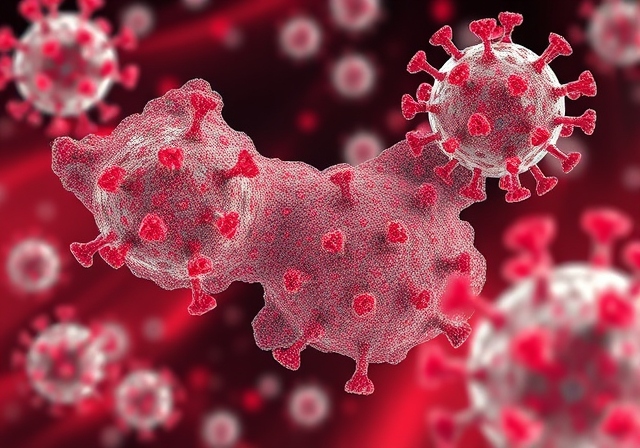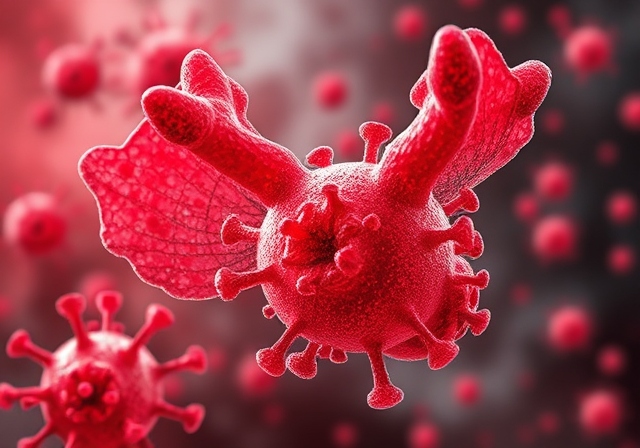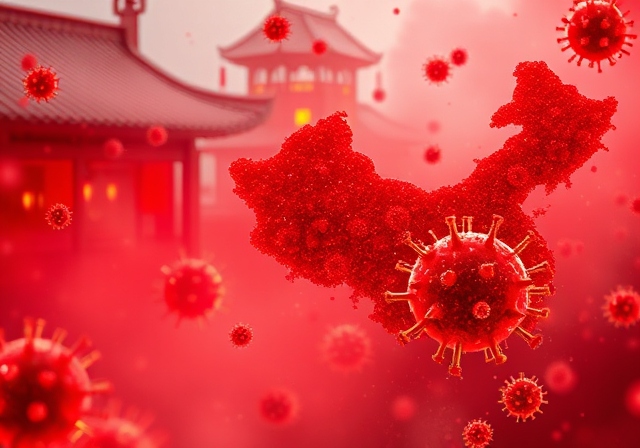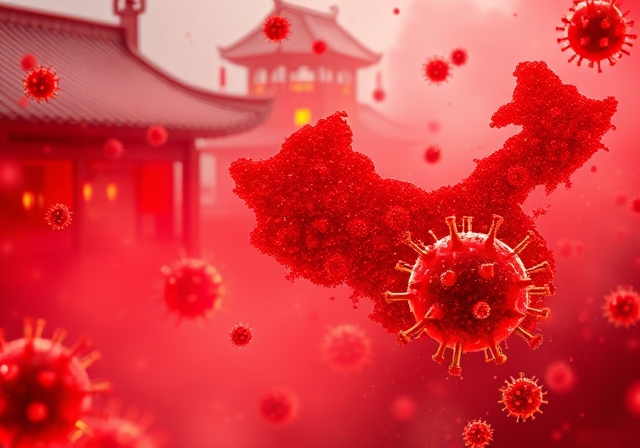HMPV As the world continues to recover from the devastating effects of the COVID-19 pandemic, new respiratory viruses are emerging, raising concerns about the potential for another global health crisis. Among these new threats is the Human Metapneumovirus (HMPV), a virus that has recently sparked concerns due to an outbreak in China. This marks a significant moment in the context of post-pandemic recovery, as it brings to light the complexities of managing viral infections in the wake of COVID-19.

HMPV is not a new virus. It was first identified in 2001, and while it is less well-known than COVID-19, it has caused significant seasonal outbreaks in various parts of the world. HMPV primarily affects the respiratory system, causing symptoms similar to those of the common cold, but it can lead to severe respiratory distress, particularly in vulnerable populations.
In this blog, we will explore the current outbreak of HMPV in China, its implications, how it compares to COVID-19, and what this means for global health security. We will also take a look at China’s response to this new challenge and the lessons learned from the COVID-19 pandemic that can be applied in managing future viral outbreaks.
What is Human Metapneumovirus (HMPV)?
Human Metapneumovirus (HMPV) is a respiratory virus that belongs to the Pneumoviridae family. It is closely related to the respiratory syncytial virus (RSV), which is one of the leading causes of respiratory illness in young children. HMPV causes a range of respiratory symptoms, from mild cold-like symptoms to severe respiratory conditions such as pneumonia and bronchiolitis.
Symptoms of HMPV Infection
HMPV typically causes symptoms similar to those of the common cold, including:
- Cough
- Runny nose
- Fever
- Sore throat
In more severe cases, especially in young children, the elderly, and those with underlying health conditions, the virus can lead to pneumonia, bronchitis, and in some cases, respiratory failure. The virus spreads through respiratory droplets, meaning it is highly contagious in crowded environments, making it a particular risk during flu season and in regions with large populations.
How Does HMPV Spread?
Similar to other respiratory viruses like COVID-19 and the flu, HMPV spreads primarily through direct contact with respiratory droplets from an infected individual. This can occur through:
- Coughing and sneezing
- Close contact with infected individuals
Given the contagious nature of HMPV, outbreaks are typically seen in community settings, including schools, hospitals, and nursing homes.
The Current HMPV Outbreak in China

While the exact scale of the HMPV outbreak in China in 2025 remains unclear, the virus has made headlines as health authorities monitor its spread. China, which faced significant challenges during the COVID-19 pandemic, now finds itself at the center of another viral outbreak just five years after the global upheaval caused by the novel coronavirus.
Reports from health authorities in China indicate that the current outbreak of HMPV has resulted in an uptick in hospitalizations, particularly among young children and the elderly. The timing of the outbreak is critical, as it comes during the winter months, which are typically associated with higher rates of respiratory illness.
In response to this new challenge, local health officials have ramped up testing and treatment efforts. There have also been calls for increased awareness of respiratory hygiene and vaccination campaigns. However, the ongoing pandemic-related restrictions and the strain on China’s healthcare system have complicated the response to this latest viral threat.
Key Facts About the HMPV Outbreak in China
- The virus typically peaks in the winter months, similar to RSV and influenza.
- It has been detected in several regions of China, though the situation is still being closely monitored.
- Hospitals, particularly in urban areas, have reported increased cases of respiratory illnesses that match the symptoms of HMPV.
- Public health experts are concerned about the potential for this outbreak to strain healthcare systems, which are still dealing with the after-effects of COVID-19.
The Legacy of COVID-19: Challenges for China’s Healthcare System
The emergence of HMPV five years after COVID-19 is a reminder of the lasting impact the pandemic has had on global health systems. During the COVID-19 crisis, China implemented strict measures, including lockdowns, mass testing, and extensive quarantine protocols. While these measures were effective in curbing the spread of COVID-19, they also put immense pressure on the country’s healthcare infrastructure.
Now, as the world grapples with the aftermath of COVID-19, countries like China are facing a new set of challenges. The sudden rise of new respiratory viruses like HMPV is a reminder that viral outbreaks can occur at any time, and public health systems need to remain vigilant even as the world moves on from COVID-19.
The Impact of COVID-19 on Respiratory Health
COVID-19 has had a lasting effect on respiratory health worldwide, with many people still dealing with post-viral complications, such as lung damage, chronic cough, and fatigue. Additionally, the pandemic has led to a delay in routine health services, including vaccinations and regular health screenings. These delayed healthcare services may have contributed to the current rise in respiratory illnesses like HMPV.
Moreover, the social and economic disruptions caused by the pandemic have made it harder for people to access healthcare, leading to a greater burden on hospitals and healthcare workers. These factors make it particularly challenging for health authorities to manage an outbreak of another respiratory virus.
Comparing HMPV to COVID-19: Similarities and Differences
While HMPV and COVID-19 are both respiratory illnesses, there are significant differences between the two viruses in terms of their spread, severity, and public health impact.

1. Transmission
Both viruses spread via respiratory droplets, but COVID-19 has a significantly higher rate of transmission compared to HMPV. COVID-19 also has the ability to spread through airborne transmission in certain settings, making it much more contagious than HMPV in some cases.
2. Severity of Disease
COVID-19 is known to cause a wide range of symptoms, from mild to severe, including pneumonia, organ failure, and death. While HMPV can also cause pneumonia and severe respiratory conditions, it typically has a more predictable and less severe course, especially in healthy individuals.
3. Global Impact
COVID-19 has caused a global pandemic, affecting millions of people worldwide and leading to widespread social and economic disruption. In contrast, HMPV outbreaks are typically localized, and while they can cause a high number of hospitalizations, they are unlikely to lead to the same level of global disruption as COVID-19.
China’s Response to the HMPV Outbreak
In response to the HMPV outbreak, China has employed several strategies to control the spread of the virus. Drawing from its experience with COVID-19, China has ramped up its testing and contact tracing efforts to identify and isolate cases as quickly as possible.
Additionally, China’s public health authorities have issued guidelines on respiratory hygiene, including the importance of wearing masks in crowded areas and frequent handwashing. These measures are aimed at reducing the transmission of the virus and preventing large-scale outbreaks.
The Chinese government has also emphasized the importance of vaccination campaigns to protect vulnerable populations. While there is no specific vaccine for HMPV at the moment, China has focused on boosting general immunity through vaccines for other respiratory viruses, including influenza.
Looking Ahead: Preparing for Future Viral Outbreaks
The HMPV outbreak in China is a stark reminder that the world is not entirely free from the threat of infectious diseases, even after the COVID-19 pandemic. As the global population continues to grow and urbanize, and as climate change impacts the spread of diseases, the likelihood of new viral outbreaks is higher than ever before.
It is essential for governments and international health organizations to prioritize pandemic preparedness, including:
- Strengthening healthcare infrastructure
- Improving early warning systems for new outbreaks
As the world moves forward from COVID-19, it is crucial to remain vigilant and adaptable in the face of new health challenges. The lessons learned from the pandemic must be applied to future outbreaks to ensure a more coordinated and effective global response.
Conclusion
The HMPV outbreak in China is an important reminder that the global community must remain vigilant when it comes to the threat of new infectious diseases. While the world is still dealing with the aftermath of the COVID-19 pandemic, the emergence of HMPV demonstrates the ever-present risk of respiratory viruses. Through continued investment in healthcare infrastructure, improved disease surveillance, and global cooperation, the world can better prepare for and respond to future viral threats. By learning from the past, we can create a healthier and more resilient global health system that can protect people worldwide from the next viral outbreak.
Symptoms and Treatment of HMPV Virus
While it is a relatively common virus that causes illness in people worldwide, it often leads to mild symptoms in healthy individuals. However, it can cause severe respiratory issues, particularly in vulnerable populations like young children, the elderly, and individuals with compromised immune systems.

Symptoms of HMPV Infection
The symptoms of HMPV infection can vary from mild to severe, and they resemble those of other respiratory viruses like the common cold, flu, and respiratory syncytial virus (RSV).
1. Mild to Moderate Symptoms:
- Cough: A dry or productive cough is common and can persist for several days.
- Sore Throat: A scratchy or painful throat can occur, especially in the early stages of the infection.
- Fever: Mild fever may develop, typically not exceeding 101°F (38.3°C).
- Fatigue: General feelings of tiredness or weakness may accompany the infection.
- Headache: A mild headache can sometimes occur alongside other cold-like symptoms.
2. Severe Symptoms: In more severe cases, HMPV can lead to complications like bronchiolitis, pneumonia, or respiratory distress, particularly in high-risk individuals such as infants, the elderly, and those with weakened immune systems.
- Difficulty Breathing: Shortness of breath or labored breathing is a common sign of severe infection.
- Wheezing: A high-pitched whistling sound during exhalation, often due to narrowed airways.
- Chest Pain or Tightness: This may occur if the virus causes inflammation in the airways or lung tissue.
- Bluish Skin: A bluish tint to the lips, face, or nails, which indicates a lack of oxygen in the blood, may occur in severe cases.
In children, particularly infants, symptoms such as rapid breathing, flaring nostrils, and rib or chest wall retractions may indicate a serious respiratory issue.
Treatment for HMPV Infection
Most people recover from the infection with supportive care, which helps alleviate symptoms while the body fights off the virus.
1. Symptomatic Treatment:
For mild cases of HMPV, the treatment usually involves managing symptoms at home:
- Fluids: Staying hydrated helps thin mucus, soothe a sore throat, and prevent dehydration, especially in cases with fever.
- Over-the-Counter Pain Relievers: Non-prescription medications like acetaminophen (Tylenol) or ibuprofen (Advil) can help reduce fever and alleviate discomfort, such as headache and sore throat.
- Nasal Saline Sprays or Drops: These can help relieve nasal congestion and make breathing easier.
- Cough Suppressants and Expectorants: In some cases, over-the-counter cough medicine may help manage persistent coughing, although these should be used cautiously, especially in children.
2. Severe Cases:
For severe cases, particularly in vulnerable individuals, medical intervention may be required:
- Oxygen Therapy: If the patient is having difficulty breathing or showing signs of low oxygen levels (e.g., bluish skin), supplemental oxygen may be administered to ensure adequate oxygenation.
- Hospitalization: In cases of pneumonia or bronchiolitis, the patient may require hospitalization for closer monitoring and more intensive treatment.
- Mechanical Ventilation: In extreme cases, where breathing becomes difficult or stops, mechanical ventilation (a ventilator) may be necessary to assist with breathing.
3. However, research into antivirals and monoclonal antibodies for respiratory viruses like HMPV is ongoing. In some instances, doctors may administer antiviral medications that are used for other respiratory infections, though these are not standard treatment and are typically used in severe cases under medical supervision.
4. Supportive Care in High-Risk Groups: Children under 2 years old, elderly adults, and people with weakened immune systems are more vulnerable to severe HMPV infection. These groups may require additional monitoring and treatment, such as:
- Nebulized Treatments: Medications such as bronchodilators may be used to help open the airways and reduce wheezing.
- IV Fluids: In cases where the patient has difficulty maintaining hydration due to fever or difficulty swallowing, intravenous fluids may be required.
Prevention of HMPV Infection
While there is no vaccine for HMPV, there are several preventive measures that can help reduce the risk of infection:
1. Hygiene Practices:
- Handwashing: Frequent handwashing with soap and water is one of the most effective ways to prevent the spread of respiratory viruses, including HMPV.
- Covering Coughs and Sneezes: Using tissues or the elbow to cover the mouth and nose when coughing or sneezing helps prevent the spread of respiratory droplets.
- Disinfecting Surfaces: Regularly cleaning surfaces that may be contaminated with respiratory droplets can help reduce the spread of the virus.
2. Avoid Close Contact with Infected Individuals: HMPV spreads through respiratory droplets, so it is important to avoid close contact with people who have symptoms of respiratory illness, especially during peak seasons for the virus (fall and winter).
3. Protect Vulnerable Populations:
- For those at higher risk, such as infants, the elderly, and immunocompromised individuals, it is important to take extra precautions, such as avoiding crowded places during peak viral seasons and ensuring that they receive appropriate medical care if they develop symptoms of HMPV.
Conclusion
HMPV is a respiratory virus that typically causes mild cold-like symptoms in healthy individuals but can lead to more serious respiratory illnesses like pneumonia and bronchiolitis in vulnerable populations. While there is no specific antiviral treatment for HMPV, most cases resolve with supportive care that focuses on symptom management. In severe cases, hospitalization may be required, and high-risk individuals may need additional medical support.
As with most respiratory viruses, the best way to prevent HMPV infection is through good hygiene practices, avoiding close contact with infected individuals, and protecting vulnerable groups from exposure. While HMPV may not be as widely known as some other viruses, its potential to cause respiratory distress means that continued vigilance and research into treatments and vaccines are essential for better managing future outbreaks.
